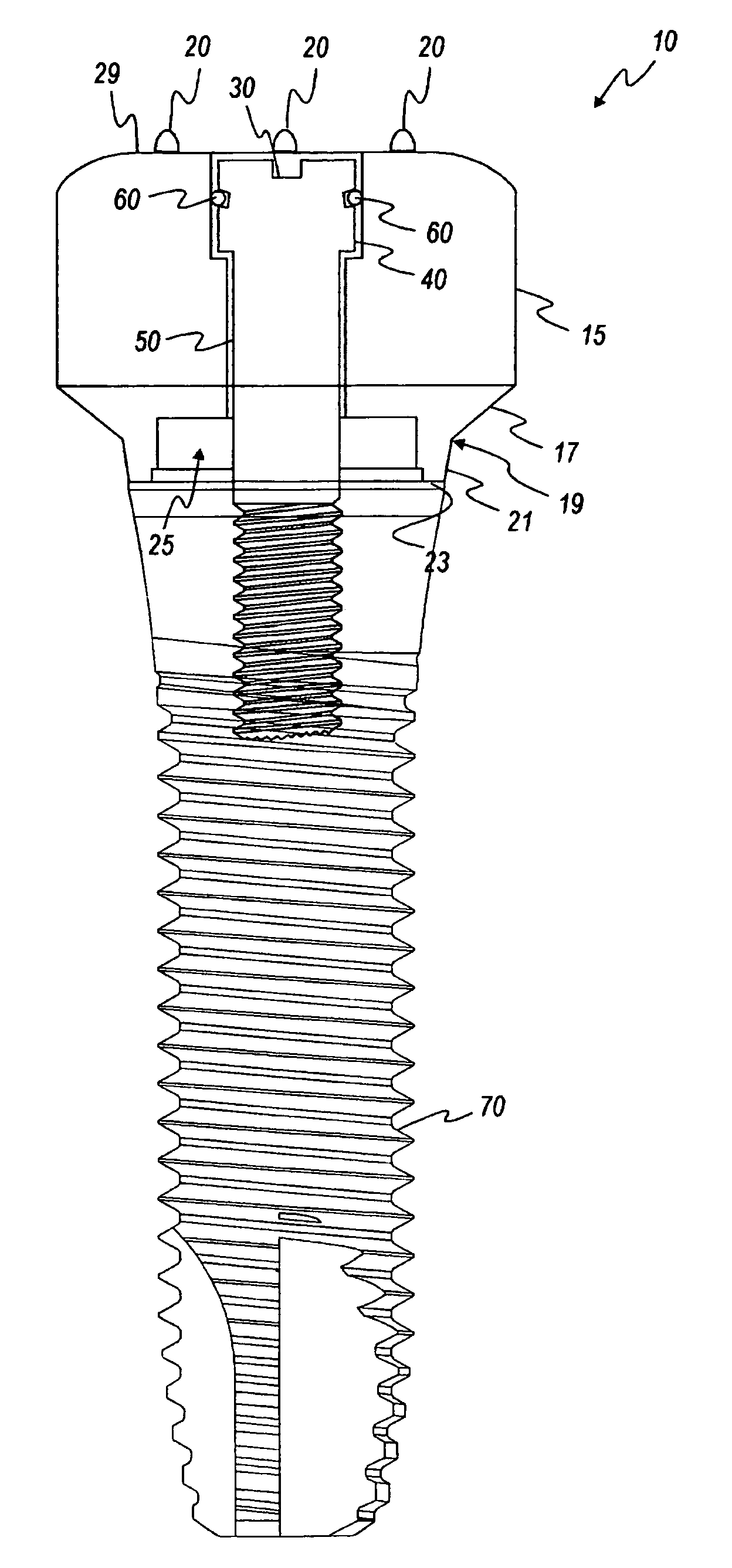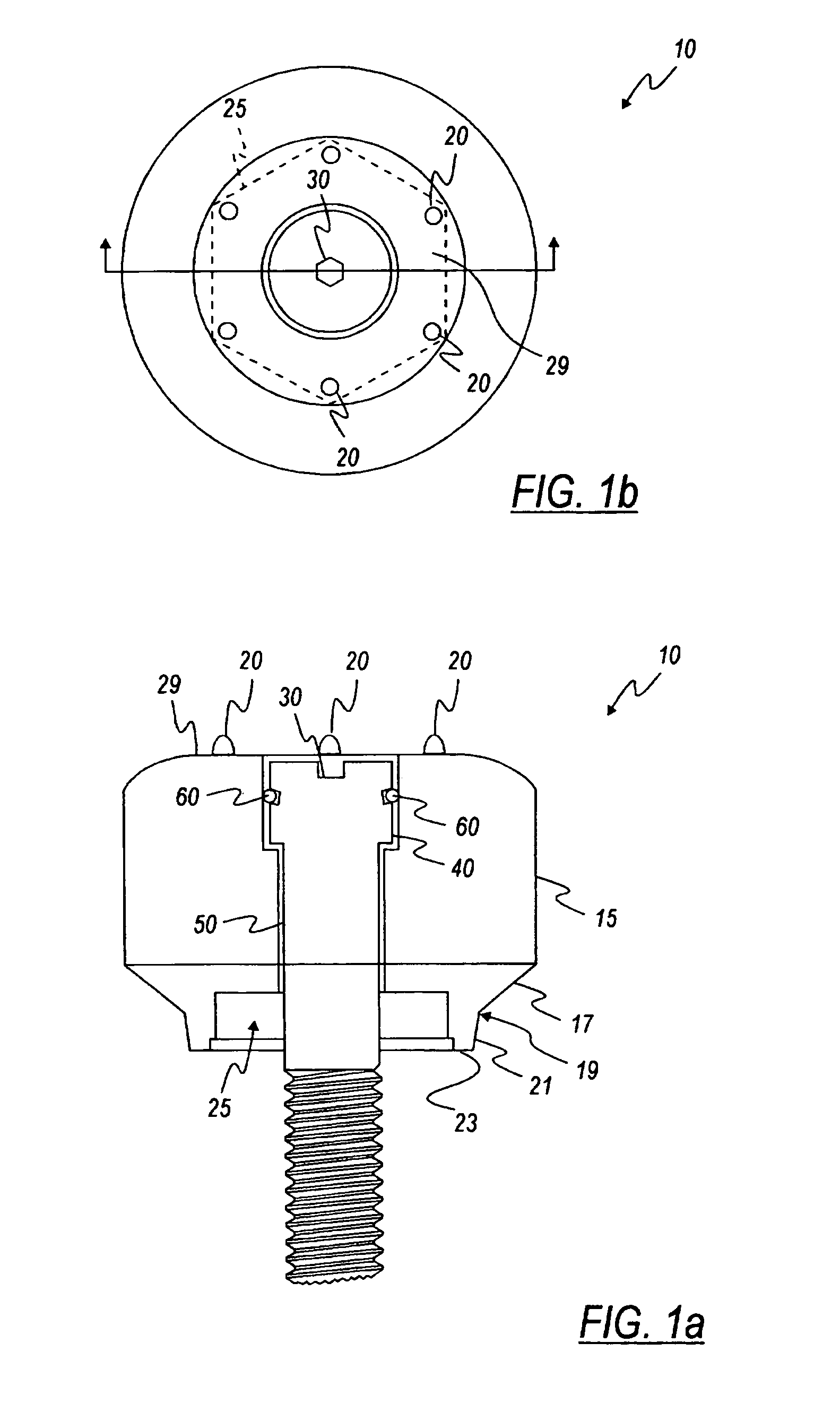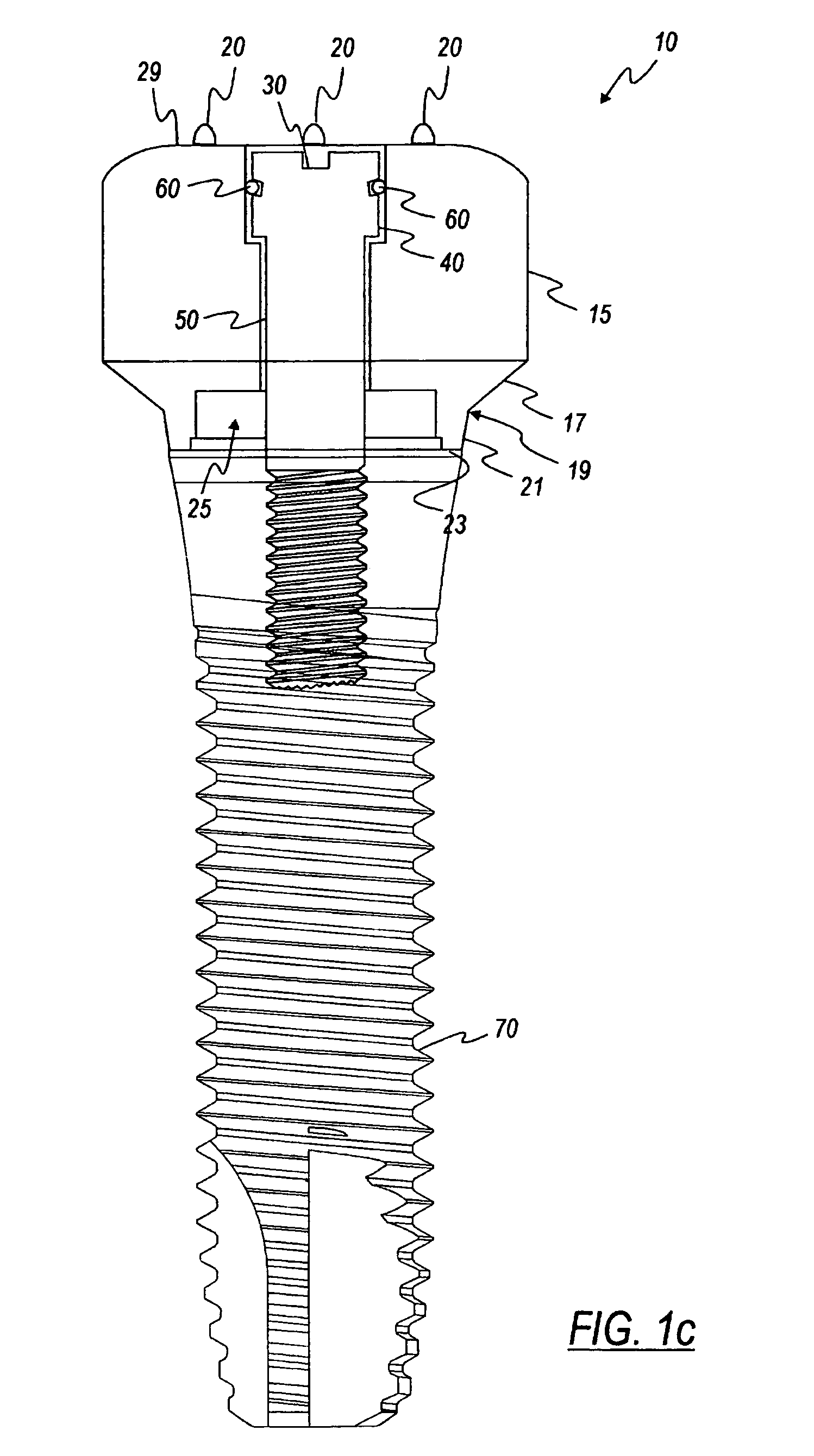Healing components for use in taking impressions and methods for making the same
- Summary
- Abstract
- Description
- Claims
- Application Information
AI Technical Summary
Benefits of technology
Problems solved by technology
Method used
Image
Examples
Embodiment Construction
[0041]As shown in FIGS. 1a and 1b, the healing abutment 10 of one embodiment of the present invention has a main body 15 with a generally circular cross-sectional shape, a first tapered section 17, a boundary 19, a second tapered section 21, an end surface 23, a hex socket 25, and dimensions that are generally suitable for replicating the emergence profile of a natural tooth. The first tapered section 17 extends downward from the main body 15 of the abutment 10, having a diameter at a boundary 19 that is generally larger than the implant (not shown). The boundary 19 separates the first tapered section 17 from the second tapered section 21 that terminates in the end surface 23. The second tapered section 21 is at an angle with the central axis of the implant that is generally in the range of from about 5° to about 15°, with 10° being preferable. Alternatively, the second tapered section 21 may be omitted such that the first tapered section 17 tapers directly to the diameter of the en...
PUM
 Login to View More
Login to View More Abstract
Description
Claims
Application Information
 Login to View More
Login to View More - R&D
- Intellectual Property
- Life Sciences
- Materials
- Tech Scout
- Unparalleled Data Quality
- Higher Quality Content
- 60% Fewer Hallucinations
Browse by: Latest US Patents, China's latest patents, Technical Efficacy Thesaurus, Application Domain, Technology Topic, Popular Technical Reports.
© 2025 PatSnap. All rights reserved.Legal|Privacy policy|Modern Slavery Act Transparency Statement|Sitemap|About US| Contact US: help@patsnap.com



